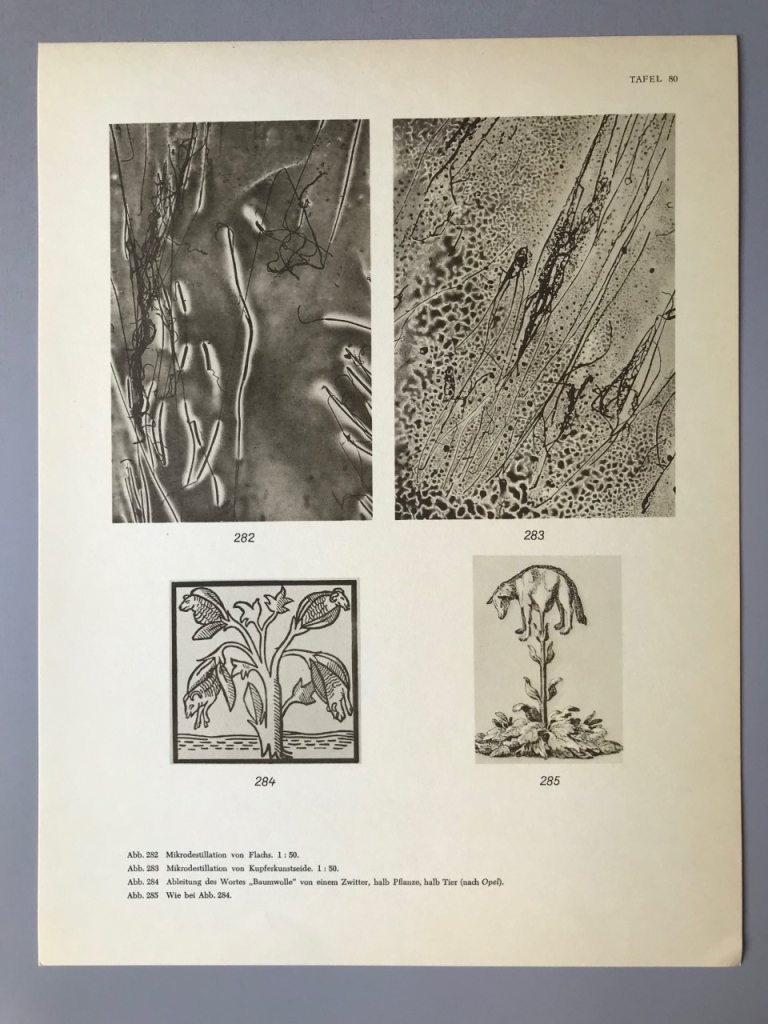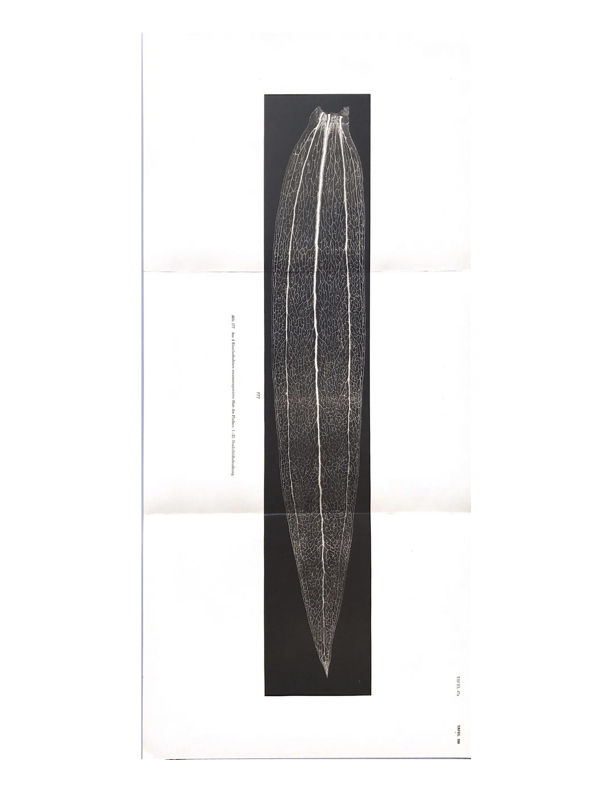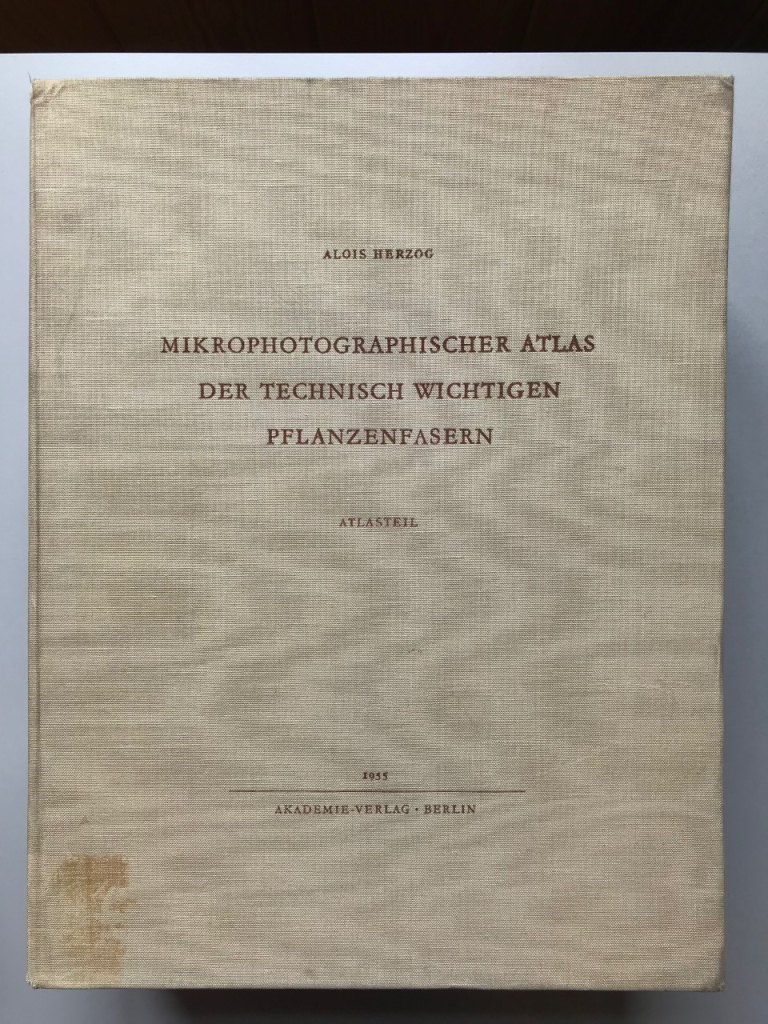 Plant specimens from the book
Plant specimens from the bookAs springtime comes upon us, we fall under its charms and become more sensitive to nature. There’s no mystery or secret: the environment around us, the renewed flora with its breath of freshness and youth, mesmerizes us humans with its unmistakable circularity and its many benefits.
Seeing the tiny new leaves growing always makes me curious; I regard them closely, fascinated by the filigree patterns…and I recall that our Library holds a remarkable book that was written in 1955 by Alois Herzog, entitled Mikrophotographischer Atlas der technisch wichtigen Pflanzenfasern (Microphotographic atlas of technically important plant fibres).
The book is an expansive resource for anyone seeking to learn more about the technical aspects of plant fibres. It contains detailed microphotographs of the most common plant fibres, including cotton, linen, jute, hemp and sisal. The photographs are accompanied by detailed descriptions of each fibre and its various uses in the textile industry.
 Microphotography of leaf fibres
Microphotography of leaf fibresWhat sets this book apart is its level of detail and precision. Herzog's thorough research and expert knowledge of plant fibres are evident on every page. The photographs are clear, and the descriptions are concise and informative. The reader’s aesthetic senses are touched when unfolding the oversize black-and-white pictures of plant specimens.
For decades, this book has been serving as an invaluable resource for anyone looking to analyze plant fibres. It found its way into our Library because easel painting conservators or textile conservators can consult it to analyze textile supports or fabric.
The analysis of plant fibres is crucial in conserving and restoring easel painting supports. Plant fibres, such as flax, hemp and cotton, have been used as canvas supports for centuries, and the properties of each fibre can vary significantly. Therefore, understanding the nature and characteristics of these fibres and assessing their chemical and physical properties is essential for preserving historic artworks, determining the appropriate treatment methods and materials for their restoration and ensuring their longevity.
 For example, understanding the tensile strength and flexibility of a particular fibre can help conservators make informed decisions about whether to re-stretch a canvas or add additional support.
For example, understanding the tensile strength and flexibility of a particular fibre can help conservators make informed decisions about whether to re-stretch a canvas or add additional support.
Despite its importance, plant fibre analysis is often overlooked in the conservation process. However, by taking the time to comprehensively analyze plant fibres, conservation professionals can ensure the best possible outcome for the preservation of historic easel paintings. This allows these artworks to be protected and enjoyed by future generations.
Mikrophotographischer Atlas der technisch wichtigsten Pflanzenfasern is an impressive piece of work that still serves as a reference for those looking to analyze the technical aspects of plant fibres. The publication is a testament to the expertise and dedication of Alois Herzog, who became an authority on the subject after years of research and study. In the ICCROM Library, the book is kept in the rare book section.
Let’s celebrate the month of May by reconnecting with nature and making new and fruitful rediscoveries!
